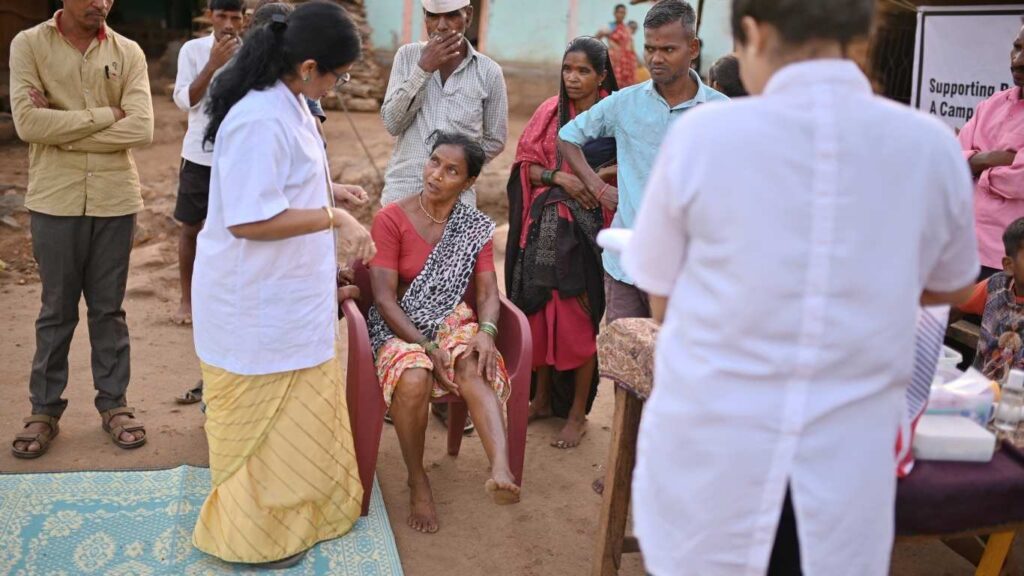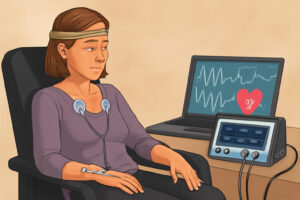Essential Lymphedema Care for Patients in Rural Areas
Lymphedema, a condition characterized by swelling due to the accumulation of lymphatic fluid, is a serious concern for many individuals, especially those who have undergone cancer treatment. While lymphedema is often associated with breast cancer survivors, it can affect anyone, including those suffering from secondary lymphedema or filarial lymphedema. Managing this condition effectively is critical to improving the quality of life for cancer survivors with lymphedema. However, for patients living in rural communities, accessing quality lymphedema care presents unique challenges. This article explores the essential aspects of lymphedema care for patients in rural areas, the challenges they face, and practical strategies for managing the condition.
What is Lymphedema and Its Impact on Cancer Survivors?
Understanding Lymphedema in Cancer Patients
Lymphedema is a condition where lymphatic fluid accumulates in the tissues, leading to swelling in the affected areas, often in the arms or legs. For cancer patients, especially those treated with radiation therapy or who have had surgery that impacts the lymphatic system, the risk of developing lymphedema increases. Breast cancer-related lymphedema is particularly common, as surgeries like mastectomies and radiation can damage or remove lymph nodes, interfering with the body’s ability to drain excess fluid.
The impact of lymphedema on cancer patients is profound, as it can affect their physical appearance, mobility, and emotional well-being. Swelling can be accompanied by pain, heaviness, or tightness in the affected limb, significantly impacting day-to-day activities. For cancer survivors, this condition is not just a physical burden but also a psychological one, often linked to the fear of cancer recurrence.
The Impact of Lymphedema on Quality of Life
The impact of lymphedema on a patient’s quality of life is substantial. Individuals with lymphedema due to cancer treatment often experience reduced mobility and discomfort, which can affect both their personal and professional lives. Additionally, lymphedema progression can lead to skin care issues, including wound care complications, as swelling and fluid accumulation make the skin more prone to infection and damage.
Psychologically, the emotional toll is high for cancer survivors dealing with lymphedema. Many patients report feelings of frustration, depression, and anxiety, as the condition often reminds them of their battle with cancer. Addressing both the physical and emotional aspects of lymphedema care is critical for improving lymphedema management in these patients.
Types of Lymphedema: Primary vs Secondary
Lymphedema can be classified into two main types:
- Primary Lymphedema: This form of lymphedema is congenital, resulting from a malfunction in the development of the lymphatic vessels. It is less common and typically appears in childhood or adolescence.
- Secondary Lymphedema: This type occurs as a result of damage to the lymphatic system due to factors such as cancer treatment, surgery, or infection. For cancer survivors, secondary lymphedema is the most common type, particularly following breast cancer treatment.
Both types require careful management to reduce symptoms and prevent further complications.
What Are the Common Lymphedema Treatments Available?
Overview of Lymphedema Treatment Options
Effective lymphedema treatment is essential for managing swelling and preventing complications. Complete Decongestive Therapy (CDT) is considered the gold standard for managing lymphedema. It involves a combination of manual lymphatic drainage, compression therapy, exercise, and skin care.
Other treatment options for patients with lymphedema include pneumatic compression devices, which help stimulate lymphatic fluid movement, and surgical interventions for advanced cases of lymphedema that do not respond to conservative treatments.
Complete Decongestive Therapy for Lymphedema
Complete Decongestive Therapy (CDT) is the cornerstone of lymphedema management. This multi-faceted approach includes:
- Manual Lymphatic Drainage (MLD): A specialized form of massage that encourages the movement of lymphatic fluid out of the affected area.
- Compression Therapy: The use of compression garments or bandages to reduce swelling and prevent further fluid accumulation.
- Exercise: Tailored exercises that promote the flow of lymphatic fluid and improve overall limb function.
- Skin Care and Wound Care: Proper hygiene, moisturizing, and wound care to prevent skin infections, which are more common in lymphedema patients.
CDT is typically provided by a certified lymphedema therapist and has proven to be highly effective in managing lymphedema symptoms.
Skin Care and Wound Care Strategies
Patients with lymphedema are at a higher risk of skin infections due to the swelling and fluid buildup in the affected areas. Proper skin care is crucial to prevent infection and promote healing. This includes daily washing and moisturizing of the skin, avoiding tight clothing that could cause irritation, and inspecting the skin regularly for signs of infection or injury.
Wound care is an integral part of lymphedema treatment, especially when lymphatic fluid leaks into the skin, causing ulcers or other wounds. Prompt treatment and maintaining a clean, dry environment are essential to prevent wound care complications in lymphedema patients.
How Can Lymphedema Therapy Be Accessed in Rural Communities?
Challenges Faced by Patients in Rural Areas
For patients living in rural areas, accessing specialized lymphedema therapy presents a range of challenges. These include:
- Limited access to specialized care: Many rural areas lack trained lymphedema therapists, making it difficult for patients to receive the comprehensive care they need.
- Travel distance and costs: Rural patients often face long travel distances to reach healthcare facilities, resulting in increased costs and logistical difficulties.
- Lack of awareness: There may be limited knowledge or awareness of lymphedema among both patients and healthcare providers in rural areas, leading to delays in diagnosis and treatment.
These barriers create a significant challenge for rural communities trying to access effective lymphedema care.
Finding Lymphedema Clinics in Rural Locations
Finding specialized lymphedema clinics in rural locations can be difficult. Many lymphedema clinics are located in urban centers, and patients in rural areas may have to travel long distances to access care. This makes it essential for rural healthcare providers to partner with specialized clinics or offer telehealth solutions to provide remote consultations and management for lymphedema patients.
Telehealth Solutions for Lymphedema Management
Telehealth is an innovative solution that has been gaining traction in rural communities. It allows lymphedema patients to consult with healthcare providers remotely, receive virtual assessments, and get advice on lymphedema self-management. Virtual appointments can help rural patients access expert care without the need for long-distance travel. Telehealth can also be used to deliver lymphedema education, allowing patients to learn about skin care, lymphedema progression, and self-care techniques from the comfort of their homes.
What Are the Barriers to Lymphedema Care in Rural Areas?
Understanding Barriers to Accessing Quality Care
There are several barriers to accessing quality lymphedema care in rural areas:
- Limited healthcare infrastructure: Many rural areas lack the necessary facilities and specialized staff, such as lymphedema therapists, to offer comprehensive care.
- Financial constraints: The costs of traveling for treatment and the expense of specialized therapy may be prohibitive for many patients in rural settings.
- Lack of education: Both patients and primary care providers in rural areas may have limited knowledge of lymphedema and its management, leading to delayed diagnosis and treatment.
Education and Treatment Gaps for Patients with Lymphedema
One of the most significant challenges in rural areas is the lack of lymphedema education. Many patients and healthcare providers are unaware of the symptoms and treatment options for lymphedema. This knowledge gap can result in delayed treatment and worsening of the condition. Providing lymphedema education programs and training for healthcare professionals in rural areas is crucial to improving care and outcomes for lymphedema patients.
Strategies for Overcoming Barriers to Care
There are several strategies to help overcome barriers to lymphedema care in rural areas:
- Mobile clinics: Bringing lymphedema care to rural communities through mobile clinics can provide much-needed services to remote populations.
- Partnerships with urban centers: Establishing partnerships between rural healthcare providers and lymphedema clinics in urban areas can help ensure patients receive the care they need.
- Use of telehealth: As mentioned earlier, telehealth can provide remote consultations, education, and follow-up care for lymphedema patients in rural settings.
How Can Patients in Rural Areas Manage Their Lymphedema Effectively?
Self-Care Techniques for Lymphedema Management
For patients in rural areas, lymphedema self-care is crucial. This includes skin care, compression therapy, and regular exercise to promote lymphatic drainage. Lymphedema self-management techniques can help reduce swelling, prevent complications, and improve quality of life. Patients can work with lymphedema therapists to develop personalized care plans that they can implement at home.
The Role of Lymphedema Education Programs
Lymphedema education programs play a critical role in empowering patients to take control of their condition. These programs teach patients about symptoms of lymphedema, management techniques, and when to seek professional care. Education and treatment can be delivered through online resources, telehealth platforms, or community-based workshops.
Functional Assessment of Lymphedema in Daily Life
A functional assessment of lymphedema is essential for understanding how the condition affects a patient’s daily life. For patients in rural areas, healthcare providers can offer remote assessments to help patients manage their lymphedema self-care routines more effectively. These assessments can also guide adjustments to treatment plans as needed.
What Is the Role of Community Support in Lymphedema Care?
Building Support Networks for Lymphedema Patients
Community support plays an important role in lymphedema management. Support groups, whether in-person or virtual, can provide emotional support and valuable information for lymphedema patients. Rural communities can work together to establish local support networks that help patients cope with the physical and emotional challenges of living with lymphedema.
Community Initiatives for Raising Awareness
Raising awareness about lymphedema in rural communities is vital. Community events, outreach programs, and educational materials can help spread awareness about the condition and encourage earlier diagnosis and treatment. Informed patients are more likely to seek quality lymphedema care and manage their symptoms effectively.
Collaborating with Healthcare Providers for Better Outcomes
Collaboration between patients with lymphedema and healthcare providers is essential for improving outcomes. Rural healthcare professionals can work with lymphedema therapists and specialists to ensure that patients receive comprehensive care, even in remote settings. By sharing resources and information, rural communities can improve lymphedema care for all patients.
Conclusion
Lymphedema care in rural areas requires innovative solutions, including telehealth and community support. By addressing barriers such as limited access to lymphedema clinics and providing education and treatment, rural communities can improve lymphedema management for cancer survivors and other affected individuals. Empowering patients with lymphedema through self-care techniques and support networks can significantly improve their quality of life and overall well-being.
FAQs
Q: What is lymphedema and how does it affect patients in rural areas?
A: Lymphedema is a condition characterized by swelling due to the accumulation of lymph fluid, often affecting the legs or arms. In rural areas, limited access to comprehensive lymphedema services can lead to inadequate treatment and management, increasing the burden of lymphedema on patients.
Q: How does filarial lymphedema differ from other types of lymphedema?
A: Filarial lymphedema is specifically caused by lymphatic filariasis, a parasitic infection prevalent in some regions, including parts of India. It leads to chronic swelling and can be more complex to treat than other forms, such as those associated with breast cancer treatment.
Q: What are the common treatment options for patients with leg lymphedema?
A: Treatment for leg lymphedema typically includes compression therapy, exercise, skin care, and in some cases, surgical options. Outpatient lymphedema programs are also available to provide structured care and education.
Q: How can breast cancer patients manage their risk for lymphedema after treatment?
A: Breast cancer patients can reduce their risk for lymphedema by engaging in a functional assessment of cancer therapy, maintaining a healthy weight, and following the guidelines provided by their healthcare team regarding arm lymphedema management.
Q: What is the importance of early intervention in the treatment of advanced lymphedema?
A: Early intervention in the treatment of advanced lymphedema is crucial as it can significantly improve outcomes, reduce complications, and enhance the quality of life for patients. Programs focusing on early detection and education are essential.
Q: What challenges do rural patients face in accessing lymphedema care programs?
A: Rural patients often face challenges such as limited access to specialized lymphedema services, transportation issues, and financial constraints, which can hinder their ability to receive timely and effective treatment for lymphedema.
Q: How does the burden of lymphedema impact the quality of life for affected individuals?
A: The burden of lymphedema can significantly impact the quality of life by causing physical discomfort, mobility issues, and emotional distress. Patients may struggle with daily activities and social interactions due to the visible nature of swelling and associated symptoms.
Q: Are there any specific care programs available for patients with filarial lymphedema in India?
A: Yes, there are specific lymphedema programs in India that focus on the treatment of lymphatic filariasis and provide comprehensive care for patients with filarial lymphedema. These programs often include education, compression therapy, and support groups.
Q: What role does a lymphedema service play in managing lower-limb lymphedema?
A: A lymphedema service provides specialized assessment and treatment for lower-limb lymphedema, including compression therapy, manual lymph drainage, and patient education, which are essential for effective management of the condition.
Q: How can patients educate themselves about the stages of lymphedema and its treatment?
A: Patients can educate themselves about the stages of lymphedema through resources such as systematic reviews, patient support groups, and consultation with healthcare professionals who specialize in lymphedema management. Understanding the stages can help in early detection and timely treatment.





